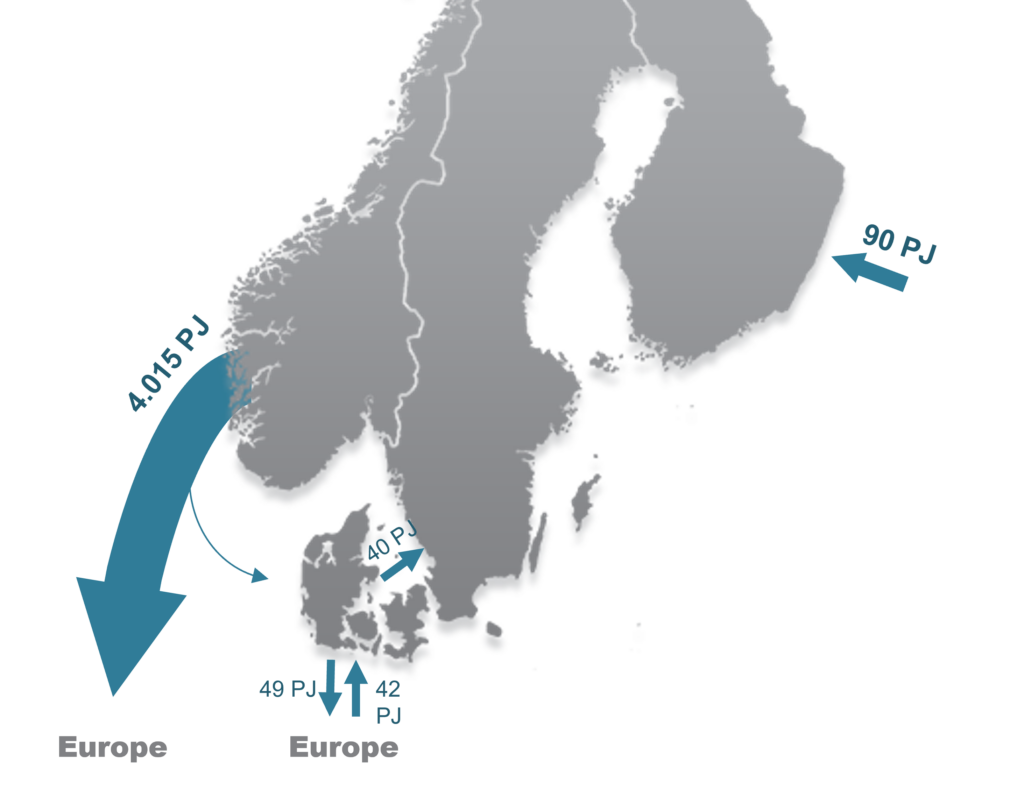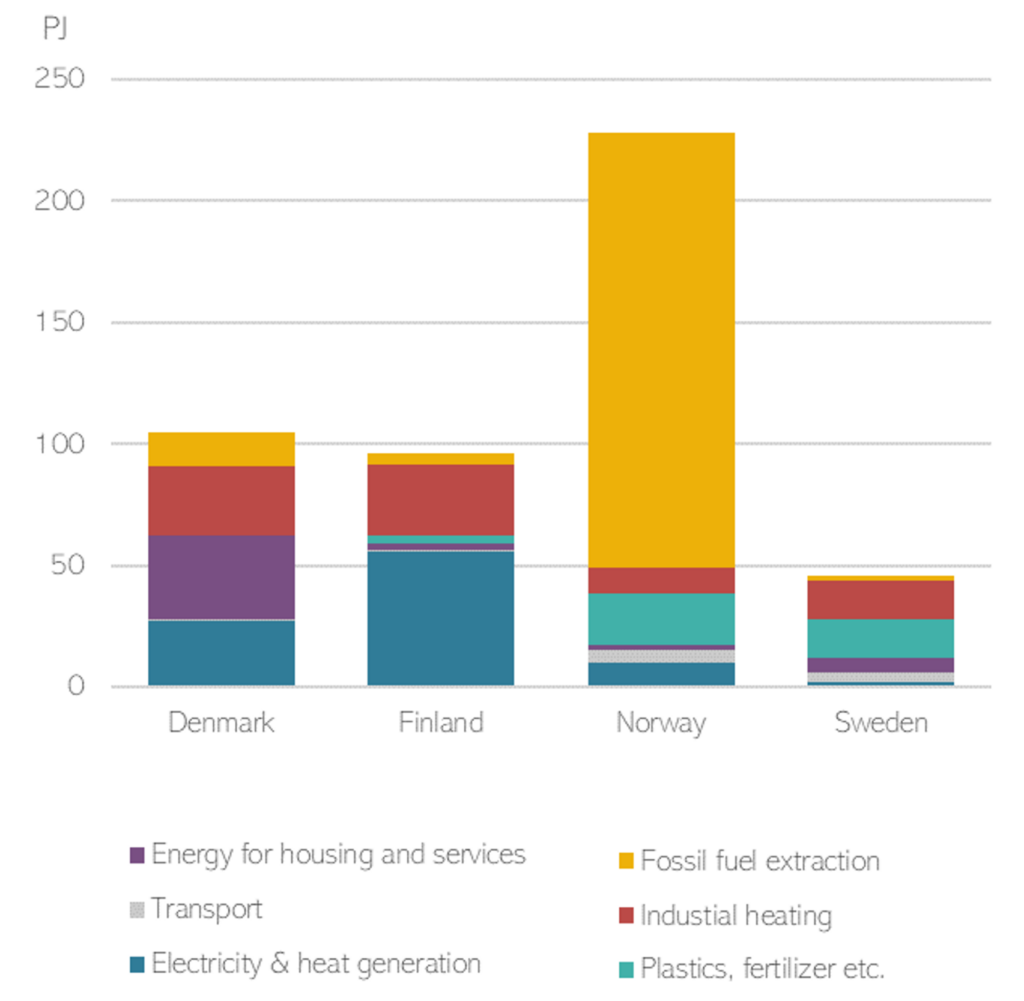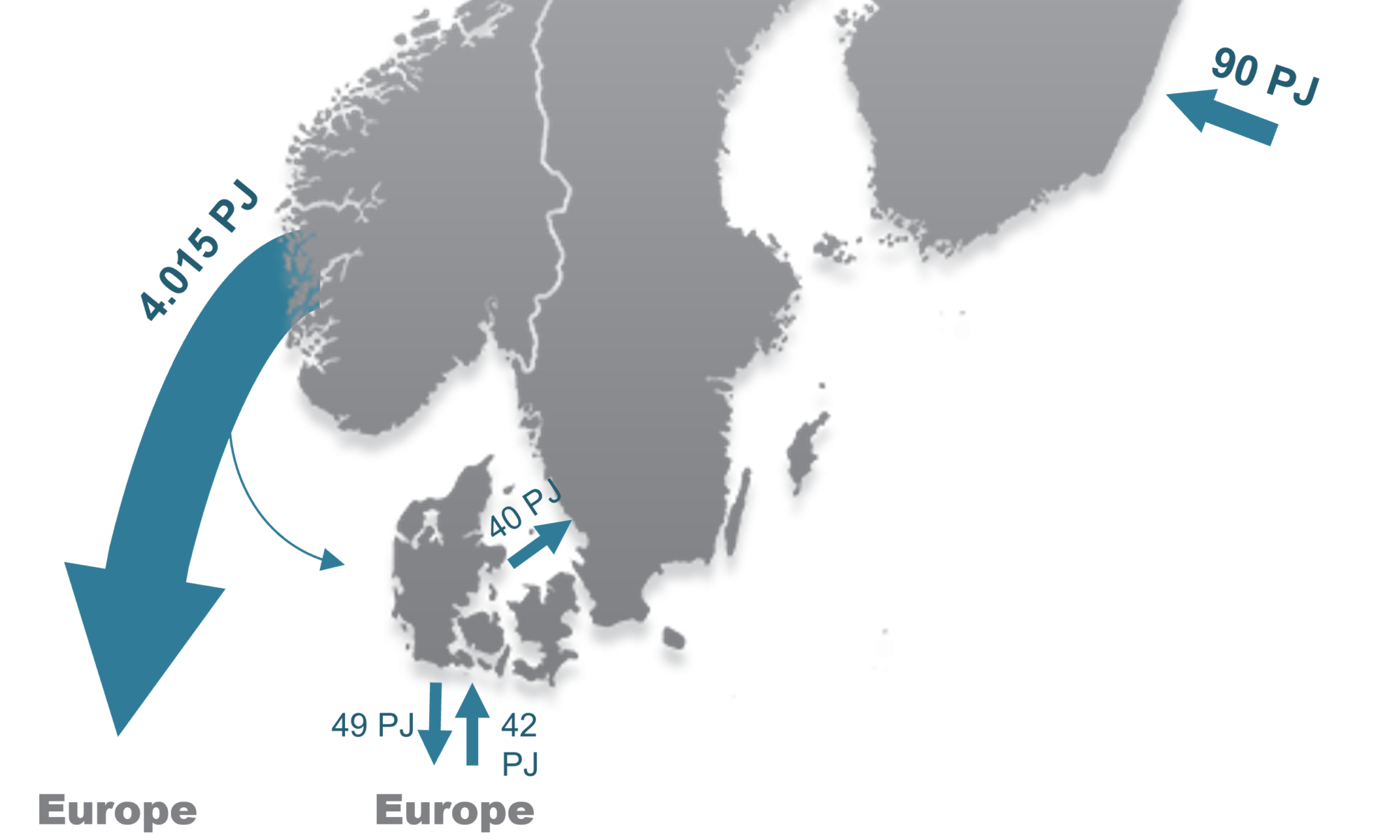We participated in a research project exploring the role of fossil gas in the Nordics. The challenge of reducing the dependency on fossil gas differs between the Nordic countries. Therefore each country has its own set of challenges to solve.
Norway exports while Sweden and Finland import gas
Denmark is connected to central Europe and receives the gas mix in the grid from both Russia and Norway. (The Danish gas production is temporarily low due to maintenance of the Tyra Field).
Finland gets gas directly from Russia and through Estonia.
Norway exports a large amount of gas mainly to central Europe and partly to the Danish grid.
Sweden gets gas from the European grid through Denmark.

Fossil gas use differs between the nordic countries
In Denmark around 350,000 buildings are heated by gas, and switching to district heating or heat pumps is a major task in the years to come.
Finland primarily uses gas for electricity and heat production and industry, especially pulp and paper and iron, and steel production consumes large amounts of gas. Switching to green energy sources in these processes is the primary task for Finland.
Norway does not have a high domestic gas use in the society as such, but fossil fuel extraction uses a large amount of gas today. Electrification of energy production can reduce fossil gas consumption substantially.
Sweden mainly uses gas for non-energy purposes such as fertilizer and plastics, but also for process heat in iron and steel production, chemical industry, and pulp and paper production.

If you want to dive into more details on the role of fossil gas in the Nordic countries, you can find the full analysis here:
Duration: 2022
Client: NEPP (North European Energy Perspectives Project)
Partners: Swedish Environmental Research Institute (IVL) and Energiforsk
EML team: Kenneth Karlsson

